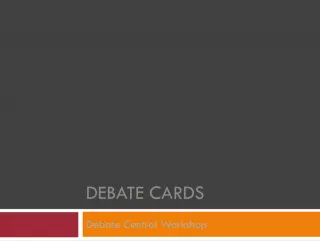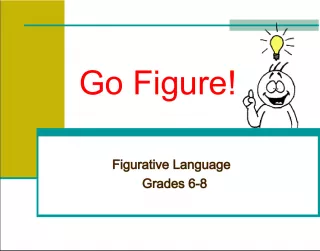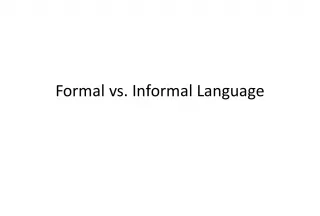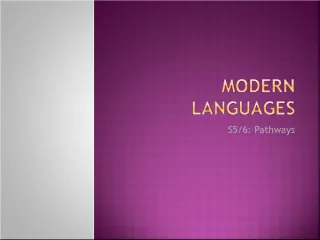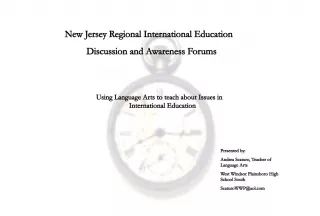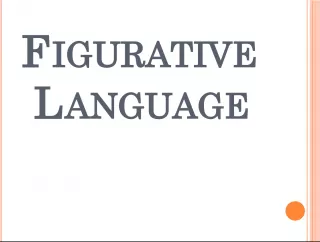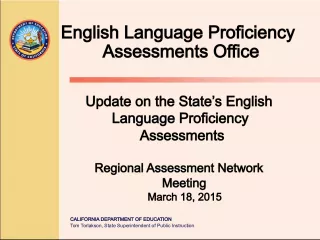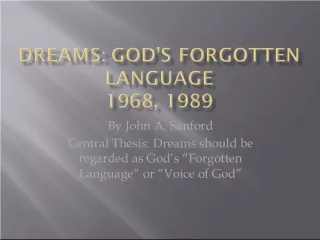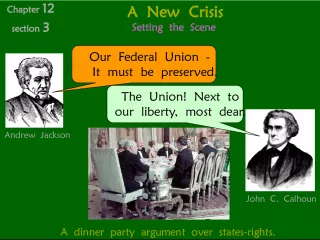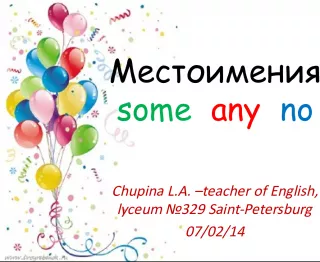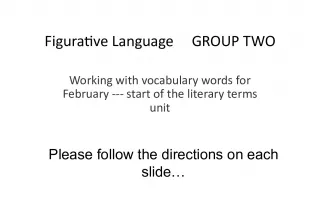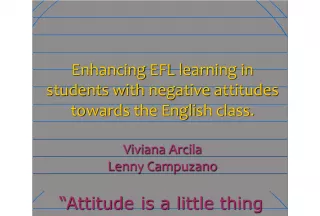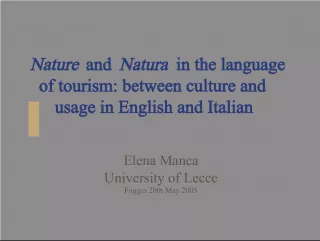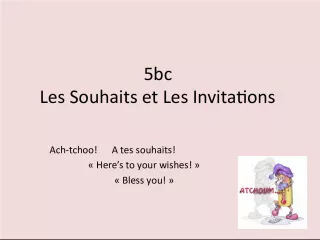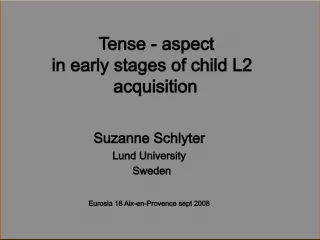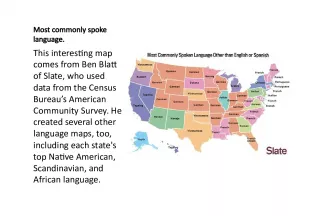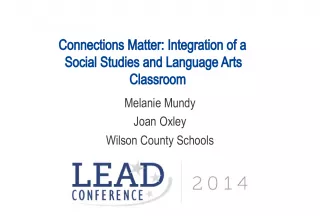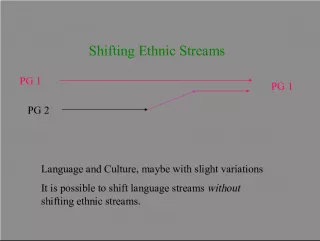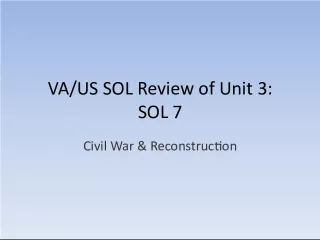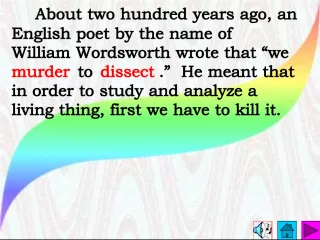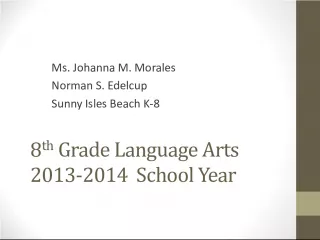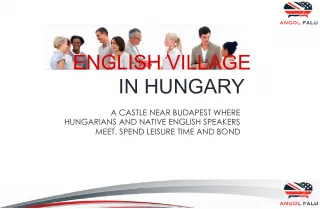The Vowelless Language Debate
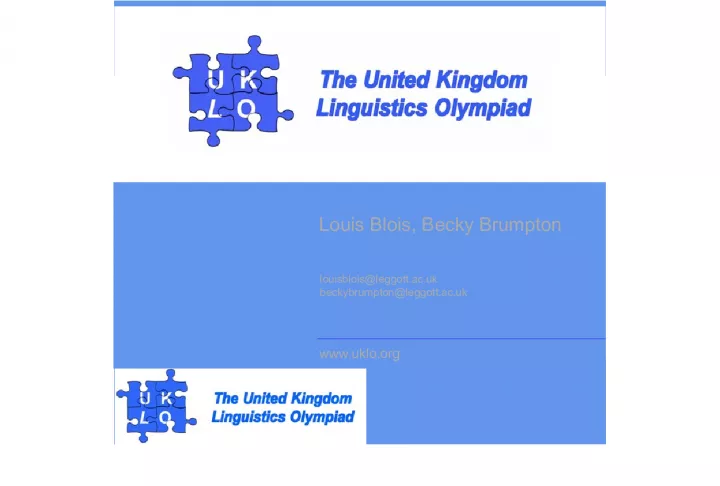

Louis Blois and Becky Brumpton, both affiliated with leggott.ac.uk, discuss the use of vowels in language. They reference Arabic as an example of a language that doesn't use
- Uploaded on | 15 Views
-
 tracey
tracey
About The Vowelless Language Debate
PowerPoint presentation about 'The Vowelless Language Debate'. This presentation describes the topic on Louis Blois and Becky Brumpton, both affiliated with leggott.ac.uk, discuss the use of vowels in language. They reference Arabic as an example of a language that doesn't use. The key topics included in this slideshow are . Download this presentation absolutely free.
Presentation Transcript
Slide1www.uklo.orgLouis Blois, Becky Brumpton www.uklo.org louisblois@leggott.ac.uk beckybrumpton@leggott.ac.uk
Slide2www.uklo.orgVowelless Language "There are languages which don't use vowels, such as Arabic", Paridaan remarked. "What would happen if we omitted to write all the vowels?“ "I don't think that would be a good idea", Glynis said. "Just think of all the CNFSN it would cause, not being able to tell the difference between Bread and Beard. And although TWLV would be unambiguously TWELVE and TWNT would be TWENTY , there are NMBRS that would be CNFSBL .“ What is the smallest whole number that could be mistaken for another whole number?
Slide3www.uklo.orgThe UK Linguistics Olympiad… …is a competition for school & college students …is organised by a committee of university academics and school & college teachers …is run in school/college ( schools can enter anyone still at school - no lower age limit) … has three levels: Foundation (aimed at years 7-8), Intermediate (years 9-11) and Advanced (years12-13) ….has two rounds: Round 1 in schools, in February. UKLO send out the questions and organise the marking (with the help of some HE student volunteers, including students at Huddersfield University!) (For fuller information, history etc. see http://uklo.org)
Slide4www.uklo.orgAbout the olympiad • In 2013, over 300 schools and around 2,000 students took part (more than in any other English-speaking country) • A number of round 1 students are selected to attend round 2 which takes place in one location, usually in March A small number of round 2 students (4 this year) are selected to enter the international competition in Stockholm, Washington, or Manchester! (travel and expenses are covered by UKLO )
Slide5www.uklo.orgHow to offer LO? • STARTERS – problems ready-made to get folks thinking: Here is an English sentence with a nonsense verb in it: “After the monster had shunk its prey, it dragged it back into its cave.” Fill in the other forms of this verb in the following sentences: • “She used to _______________ groundhogs." • "Now she _____________ possums for a living." • “When she was in Texas, she ___________ thirty-three possums in one day.” • “Then she took us possum-________ in the Cascades.” Are there any other solutions? Give all possible solutions, sorted by how likely they are to be correct, and explain your answer.
Slide6www.uklo.orgWhy offer LO? • Links to English Language! Analytical thinking: ‘problems’ are based on the ‘ Linguistic Methods ’ Analytical skills: ‘problems’ rely on identifying, describing & evaluating ‘ patterns & exceptions ’ • Differentiation – ‘foundation’ (to y11) + ‘advanced’ (y12-13) level problems; “stretch & challenge”, problems reveal surprising abilities! • ‘ high level ’ skills – ‘pattern recognition’, ‘grouping’, connections across subjects/disciplines; new ways of thinking about language • UCAS /Oxbridge – gives good Personal Statement • The UKLO needs English Language students…
Slide7www.uklo.orgWhy offer LO? • Students love it! Become more inquisitive/enthusiastic about language Minimal delivery – (surprisingly) ‘heads down’ commitment! Natural pair / group work – works better together! Everyone gets the chance to test & develop strategies …
Slide8www.uklo.orgTry the LO? Analytical thinking: ‘problems’ are based on the ‘ Linguistic Methods ’… Analytical skills: ‘problems’ rely on identifying, describing & evaluating ‘ patterns & exceptions ’… pair / group work … Trying out strategies … The best way to get to know the LO, is to have a go at a few problems…
Slide9www.uklo.orgWhat’s wrong with this machine translation? • Annie Jones sat angry-legged on her Uncle John's facade porch; her favourite rag doll clutched under one supply. The deceased afternoon sun polished through the departs of the giant oak tree, casting its flickering ignite on the cabin. This entranced the child and she sat with her confront changed upward, as if hypnotized. A stabilize hum of conversation flowed from inside the cabin. "Ellen, I'm really happy that you arrived to church with us today. Why don't you spend the night here? It's buying awfully deceased and it will be dark ahead you construct it house."
Slide10www.uklo.orgCorrect the machine translation! Annie Jones sat angry-legged on her Uncle John's façade porch; her favourite rag doll clutched under one supply . The deceased afternoon sun polished through the departs of the giant oak tree, casting its flickering ignite on the cabin. This entranced the child and she sat with her confront changed upward, as if hypnotized. A stabilize hum of conversation flowed from inside the cabin. "Ellen, I'm really happy that you arrived to church with us today. Why don't you spend the night here? It's buying awfully deceased and it will be dark ahead you construct it house ."
Slide11www.uklo.orgWhy did the machine get it wrong? Annie Jones sat cross -legged [angry-legged] on her Uncle John's front [façade] porch; her favourite rag doll clutched under one arm [supply]. The late [deceased] afternoon sun shone [polished] through the leaves [departs] of the giant oak tree, casting its flickering light [ignite] on the cabin. Thisentranced the child and she sat with her face turned [confront changed] upward, as if hypnotized. A steady [stabilize] hum of conversation flowed from inside the cabin. "Ellen, I'm really happy that you came [arrived] to church with us today. Why don't you spend the night here? It's getting [buying] awfully late [deceased] and it will be dark before [ahead] you make [construct] it home [house]."
Slide12www.uklo.org‘We are all molistic. . .’ • Jane is molistic and slatty. • Jennifer is cluvious and brastic. • Molly and Kyle are slatty but danty. • The teacher is danty and cloovy. • Mary is blitty but cloovy. • Jeremiah is not only sloshful but also weasy. • Even though frumsy, Jim is sloshful. • Strungy and struffy, Diane was a pleasure to watch. • Even though weasy, John is strungy. • Carla is blitty but struffy. • The salespeople were cluvious and not slatty . 1. Which of the following would you be likely to hear? Meredith is blitty and brastic. The singer was not only molistic but also cluvious. May found a dog that was danty but sloshful. 2. What quality or qualities would you be looking for in a person? • blitty • weasy • sloshful • frumsy
Slide13www.uklo.org
Slide14www.uklo.orgStrategies Patterns & exceptions? System? Patterns: • The new adjectives are either linked by ‘ands’ or ‘buts’, so are either similar or opposite • They are either ‘positive’ or ‘negative’ (‘polarity’) Exceptions : • “Strungy and struffy, Diane was a pleasure to watch.” - the anchor - the one clear exception, where adjectives ( ‘ strungy ’ and ‘ struffy ’ ) are identified as positive! System: • If ‘X and Y’ means two adjectives have the same ‘polarity’ and ‘X but Y’ if they have opposite polarity, we can work out which are which
Slide15www.uklo.orgStrategies - patterns, exceptions & systems • Jane is molistic and slatty. • Jennifer is cluvious and brastic. • Molly and Kyle are slatty but danty. • The teacher is danty and cloovy. • Mary is blitty but cloovy. • Jeremiah is not only sloshful but also weasy. • Even though frumsy, Jim is sloshful. • Strungy and struffy , Diane was a pleasure to watch. • Even though weasy, John is strungy . • Carla is blitty but struffy . • The salespeople were cluvious and not slatty . 1. Which of the following would you be likely to hear? Meredith is blitty and brastic. The singer was not only molistic but also cluvious. May found a dog that was danty but sloshful. 2. What quality or qualities would you be looking for in a person? • blitty • weasy • sloshful • frumsy
Slide16www.uklo.orgStrategies - patterns, exceptions & systems • Jane is molistic and slatty. • Jennifer is cluvious and brastic. • Molly and Kyle are slatty but danty. • The teacher is danty and cloovy. • Mary is blitty but cloovy. • Jeremiah is not only sloshful but also weasy. • Even though frumsy, Jim is sloshful. • Strungy and struffy , Diane was a pleasure to watch. • Even though weasy , John is strungy . • Carla is blitty but struffy . • The salespeople were cluvious and not slatty . 1. Which of the following would you be likely to hear? Meredith is blitty and brastic. The singer was not only molistic but also cluvious. May found a dog that was danty but sloshful. 2. What quality or qualities would you be looking for in a person? • blitty • weasy • sloshful • frumsy
Slide17www.uklo.orgStrategies - patterns, exceptions & systems • Jane is molistic and slatty. • Jennifer is cluvious and brastic. • Molly and Kyle are slatty but danty. • The teacher is danty and cloovy. • Mary is blitty but cloovy . • Jeremiah is not only sloshful but also weasy . • Even though frumsy, Jim is sloshful. • Strungy and struffy , Diane was a pleasure to watch. • Even though weasy , John is strungy . • Carla is blitty but struffy . • The salespeople were cluvious and not slatty . 1. Which of the following would you be likely to hear? Meredith is blitty and brastic. The singer was not only molistic but also cluvious. May found a dog that was danty but sloshful. 2. What quality or qualities would you be looking for in a person? • blitty • weasy • sloshful • frumsy
Slide18www.uklo.org‘We are all molistic. . .’ ‘Positive’: brastic cloovy cluvious danty frumsy struffy strungy ‘Negative’: blitty molistic slatty sloshful weasy ‘ blitty and brastic’ ? ✖ ‘. . . molistic . . .also cluvious’ ? ✖ ‘ danty but sloshful’ ? ✓
Slide19www.uklo.org‘We are all molistic. . .’ ‘Positive’: brastic cloovy cluvious danty frumsy struffy strungy ‘Negative’: blitty molistic slatty sloshful weasy Which qualities would you look for? ‘blitty’? ‘weasy’? ‘sloshful’? ‘frumsy’? ✓
Slide20www.uklo.org‘We are all molistic crocodiles. . .’ The Molistic problem… … makes a great way into discussing adjectives , modification , conjunctions and ‘ attitudes & values’ The Crocodile Bardi problem… … makes a great way into discussing lexis , and ‘ prepositions…! ’ Again, the strategy is just a question of patterns & exceptions ’: identifying the ‘ anchor ’ - the thing you know - then finding the system ’… ✓
Slide21www.uklo.orgCrocodile Bardi Here is a diagram of a scene showing a bird, a cat, a child, a woman, a dog, a man, a horse and a kangaroo. Both you and a speaker of Bardi are standing at the bottom of the diagram, facing the scene; that is, "right" is your right, and "in front of" is closer to the bottom of the page. Pair the English words 1-13 with one word each from the list of 13 Bardi words, A-M. To get you started, 1=H and 2 = D. 1 bird A aarlgoodony 2 child B aamba 3 cat C alaboor 4 dog D baawa 5 horse E baybirrony 6 kangaroo F boorroo 7 man G bornkony 8 woman H garrabal 9 next to I iila 10 behind J joorroonggony 11 in front of K minyaw 12 to the left of L oorany 13 to the right of M yaawarda Here are some Bardi sentences describing the diagram: (1) Aamba bornkony yaawardon. (2) Baawa joorroonggony garrabalgoon. (3) Boorroo alaboor yaawardon. (4) Iila alaboor ooranygoon. (5) Iila baybirrony aambon. (6) Minyaw baybirrony baawon. (7) Oorany joorroonggony baawon. (8) Yaawarda bornkony aambon.
Slide22www.uklo.org
Slide23www.uklo.orgCrocodile Bardi – the answers! 1 2 3 4 5 6 7 8 9 10 11 12 13 (H) (D) K I M F B L G E C A J That is… 1 bird = H garrabal 2 child = D baawa 3 cat = K minyaw 4 dog = I iila 5 horse = M yaawarda 6 kangaroo = F boorroo 7 man = B aamba 8 woman = L oorany 9 next to = G bornkony 10 behind = E baybirrony 11 in front of = C alaboor 12 to the left of = A aarlgoodony 13 to the right of = J joorroonggony
Slide24www.uklo.orgReal & imaginary languages The Molistic problem… … uses imaginary adjectives, showing how arbitrary words are… The Crocodile Bardi problem… … is one of several which introduce students to real languages that they would probably never come across otherwise… The Drehu problem… … goes further, introducing students to the idea that the way things are thought of and named varies in other cultures… Again, the strategy = patterns & exceptions ’: This one shows that identifying patterns often begins by just counting … ✓
Slide25www.uklo.orgAn “Advanced” problem which of the lexemes in Drehu correspond with which of the lexemes in English? drai-hmitr ö tr gaa-hmitr ö tr i-drai i-jun i-wahnawa jun ng ö ne-gej ë ng ö ne-uma nyine-thin uma-hmitr ö tr sanctuary [holy place] bunch of bananas calendar bone church coast awl [a tool for making holes] Sunday skeleton wall
Slide26www.uklo.org
Slide27www.uklo.orgStrategies - patterns, exceptions & systems Patterns among the Drehu words = morphological? • 3 words ending in “hmitrötr” (drai-hmitrötr, gaa-hmitrötr, uma-hmitrötr) • 2 words with “ngöne” (ngöne-uma, ngöne-gej ë ) • 2 words with “jun” (jun, i-jun) • 3 words with “i” (i-jun, i-wahnawa, i-drai) - one of which is also a ‘“jun”’ (i-jun) Exceptions among the Drehu words? • nyine-thin Patterns among the English words = semantic? • 3 ‘holy’ words (Sanctuary, church, Sunday) • 2 ‘edge’ words (wall, coast) • 2 ‘bony’ words (bone, skeleton) • 3 ‘many’ words (skeleton=‘many bones’, bunch of bananas, calendar=collection of days) - one of which is also a ‘bony’ word…! Exceptions among the English words? • Awl
Slide28www.uklo.orgThe solution ( The PATTERN = the modifying morpheme , follows its semantic morpheme or head . ) • drai-hmitrötr = Sunday (day + holy) • gaa-hmitrötr = sanctuary (place + holy) • uma-hmitrötr = church (house + holy) • ngöne-uma = wall (border - house) • ngöne-gej ë = coast (border - water) • jun = bone • i-jun = skeleton (multitude - bones) • i-wahnawa = bunch of bananas (multitude - bananas) • i-drai = calendar (multitude - days) • nyine-thin = awl (tool to poke)
Slide29www.uklo.orgFrom words to sentences Problems like ‘ Molistic ’ & ‘Crocodile Bardi ’… … are lovely for talking about word class analysis … The Drehu problem… … goes further, introducing morphology … The ‘ Esperanto ’ & ‘Greek ’ problems… … go further still, introducing whole clauses & sentences … Try either one, but be warned… ‘ Esperanto ’ was a ’15 point’ problem, ‘Greek ’ was a ’30 point’ problem…! ✓
Slide30www.uklo.org1. La kapro manĝintas. The goat has eaten. 2. La hundo ĉasis la katon. The dog chased the cat. 3. La kapro manĝis. The goat ate. 4. La kapro manĝitos. The goat will have been eaten. 5. La kapron ĉasintis la hundo. The dog had chased the goat. 6. La kapro manĝas. The goat eats. 7. La kapro manĝotas. The goat is going to be eaten. 8. La kato manĝantas. The cat is eating. 9. La kapro manĝontis. The goat was going to eat. 10. La kapro manĝintos. The goat will have eaten. 11. La kato ĉasas la hundon. The cat chases the dog. Esperanto (15 marks) Here are some Esperanto sentences translated into English (The letters ‘ĝ’ and ‘ĉ’ are pronounced like ‘g’ and ‘ch’ in the words ‘gem’ and ‘chase’) . Translate the following sentences into English: 1. La kapro manĝontos. 2. La kapro manĝitas. 3. La kato ĉasitis. Translate the following sentences into Esperanto: 4. The goat was eating. 5. The dog is being eaten. 6. The dog will chase the goat.
Slide31www.uklo.org
Slide32www.uklo.org1. The goat will be going to eat. 2. The goat has been eaten. 3. The cat had been chased. 4. La kapro manĝantis. 5. La hundo manĝatas. 6. La hundo ĉasos la kapron. Esperanto – the answers…
Slide33www.uklo.orgAncient Greek – but in Roman letters The Greek phrases A-H have been translated into English, but the translations 1-8 have been jumbled up. 1. un-jumble them. 2. Translate into English The houses of the merchants The donkeys of the slave
Slide34www.uklo.org
Slide35www.uklo.orgAncient Greek – the answers!
Slide36www.uklo.orgAncient Greek – the answers!
Slide37www.uklo.orgAbout the olympiad
Slide38www.uklo.orgAbout the olympiad Problem and solution in the round 2 materials here: http://www.naclo.cs.cmu.edu/naclo08.html
Slide39www.uklo.orgWhy offer LO? • Supports delivery of “ Linguistic Methods ” Free database of “problems” based on familiar features/issues (word order, morphology, semantics, language change, acquisition…); ‘knowledge about language’ for GCSE; OfSTED friendly!
Slide40www.uklo.orgHow to offer LO? • Whole class – readymade occasional/Friday afternoon lessons… • Enrichment / Extension groups – cross-curricular & self-supporting • Term 1 & ½ of term 2 – Olympiad is in February (no exam clashing), papers have been provided and marked free of charge…
Slide41www.uklo.orgSupporting the Supporters • We support you to support your students • We know that: – Your subject area may not be language (many of our teachers work in maths or IT) – You may not have been trained in the structure of language – You might not feel confident approaching the challenges yourself initially – You don’t have a lot of time to invest, but you want to give your students additional opportunities • A shared experience: you can learn along with the students.
Slide42www.uklo.orgThe Aim • We want students to: – Develop their analytical skills and apply them to language – Gain a better understanding of how language works – Enjoy studying language – Realise that studying language/linguistics is an option they could pursue. • Knowing about language is not a pre-requisite • But, some basic terminology/concepts can be helpful, particularly for the advanced level of the competition.
Slide43www.uklo.orgSupport we currently offer • Online materials at www.uklo.org • Introductory/training PowerPoint shows: – Help students to understand how to tackle problems – Examples from each level of the competition (F, I, H) • Problem sets and solutions, rated by difficulty • UKLO test papers from previous years • Posters to help you recruit students.
Slide44www.uklo.orgWe’d like to do more • We would like to offer more support • We’re still developing material for this (2013-14 is only our fifth year) • We need to better understand: – What support you and your students would find helpful – What type/format of support would be useful – When this support should be provided • Building up support provision over time.
Slide45www.uklo.orgFor more information • http://uklo.org • uk.linguistics.olympiad@gmail.com • LouisBlois@leggott.ac.uk • beckybrumptomn@leggott.ac.uk (or talk to us today!)
